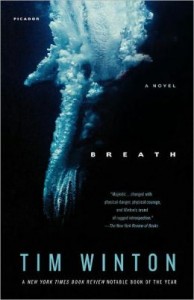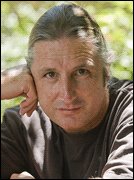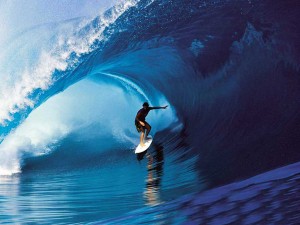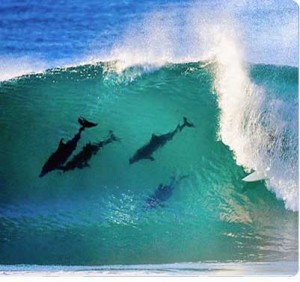“Could I do something gnarly, or was I just ordinary? I’ll bet my life that despite his scorn, Loonie was also [posing these questions to himself]. We didn’t know it yet, but we’d already imagined ourselves into a different life, another society, a state for which no raw boy has either words or experience to describe. Our minds had already gone out to meet it and we’d left the ordinary in our wake.”
 When a middle-aged EMT arrives at the scene of a “suicide” by a seventeen-year-old who has hanged himself, he knows instinctively that this is an accident and not a real suicide. Two girls are hunched on the couch downstairs, the boy’s father sports a broken collarbone, and the suicide site has been “sanitized,” well before the call to the EMTs, a clear indication to the arriving EMT that the boy was experimenting with auto-asphyxiation and that he went too far. Through flashbacks, the EMT on the scene, Brucie Pike (“Pikelet”), relives his own coming-of-age on the west coast of Australia in the 1960s and 1970s. A lonely boy leading a solitary life, he finds a companion, if not friend, in Ivan Loon (“Loonie”), with whom he shares his love of extreme surfing. “How strange it was,” Pikelet remarks, “to see men do something beautiful. Something pointless and elegant, as though nobody saw and cared.”
When a middle-aged EMT arrives at the scene of a “suicide” by a seventeen-year-old who has hanged himself, he knows instinctively that this is an accident and not a real suicide. Two girls are hunched on the couch downstairs, the boy’s father sports a broken collarbone, and the suicide site has been “sanitized,” well before the call to the EMTs, a clear indication to the arriving EMT that the boy was experimenting with auto-asphyxiation and that he went too far. Through flashbacks, the EMT on the scene, Brucie Pike (“Pikelet”), relives his own coming-of-age on the west coast of Australia in the 1960s and 1970s. A lonely boy leading a solitary life, he finds a companion, if not friend, in Ivan Loon (“Loonie”), with whom he shares his love of extreme surfing. “How strange it was,” Pikelet remarks, “to see men do something beautiful. Something pointless and elegant, as though nobody saw and cared.”

Tim Winton on Facebook
But the beauty of surfing quickly yields in importance to its excitement and its increasingly dangerous thrills. “There was never any doubt about the primary thrill of surfing, the huge body-rush we got flying down the line with the wind in our ears. We didn’t know what endorphins were, but we quickly understood how narcotic the feeling was, and how addictive it became; from day one I was stoned from just watching,” Pikelet declares.
Tim Winton, one of Australia’s best known and most prolific contemporary authors, takes the reader along on a series of athletic “tests” which Pikelet and Loonie face as young teens. They prepare for their dangerous challenges by practicing holding their breaths for extraordinarily long periods of time so that they can dive deep and survive the boiling surf if they are upended during their most dangerous rides, and they force themselves to go the limit on every ride, no matter how frightening it may be.
 Soon the boys become disciples of middle-aged Billy Sanderson (“Sando”), a surfing guru who fears nothing and who takes them to remote and ever more dangerous sites where they can test their mettle. Regarding themselves as a “secret society of three,” they seek surfing “appointments with the undisclosed.” As they learn to “inoculate” themselves against the worst of their fears, Sando tells Pikelet and Loonie that “It’s not about us. It’s about you. You and the sea, you and the planet,” and they respond by practicing hard, obeying the training regimen set up by Sando, and believing that “what we did and what we were after…was the extraordinary.”
Soon the boys become disciples of middle-aged Billy Sanderson (“Sando”), a surfing guru who fears nothing and who takes them to remote and ever more dangerous sites where they can test their mettle. Regarding themselves as a “secret society of three,” they seek surfing “appointments with the undisclosed.” As they learn to “inoculate” themselves against the worst of their fears, Sando tells Pikelet and Loonie that “It’s not about us. It’s about you. You and the sea, you and the planet,” and they respond by practicing hard, obeying the training regimen set up by Sando, and believing that “what we did and what we were after…was the extraordinary.”
In their excitement about pushing themselves to the limits, none of the “cult” of three pays any heed to the idea that they could actually die by testing themselves in this way, believing instead that one becomes extraordinary only by facing fears and taking risks, and the bigger the risk, the better. “There was an intoxicating power to be had from doing things that no one else dared try,” Pikelet observes. Over time, he begins to become prideful, isolating himself almost completely from his school peers: “Wherever I went, I felt like the last person awake in a room of sleepers.”

Scuba diver (bottom center) and surfer (far right in surf) enjoy a day with dolphins. At least I think they are dolphins.
Eventually, however, Pikelet begins to question the relationship between excitement, thrills, risk, and death and what maturity really means. Does being a mature man mean giving up thrills and choosing to be “ordinary?” Is “extraordinary” a relative term bestowed on one person by other people who share the same goals? And how does one really become “extraordinary?” Ultimately confused, after thinking he has discovered all the answers, Pikelet must finally work out what is really important and what risks are really worth taking.
In spare prose which uses some of the most vivid action verbs ever included in a novel, Winton tells an exciting story which makes the seductive thrills of surfing comprehensible to the non-surfer. Pikelet, Loonie, and Sando clearly reveal who they are as humans—within the surfing milieu and within their private lives. Some of them grow in the course of the novel, and some do not. Clearly articulated, the life lessons which Winton illustrates evolve from the action of this unusual plot, and his style and structure emphasize their importance. In the conclusion Brucie Pike reviews his life at age fifty-two, finally putting his life as Pikelet-the-surfer into perspective. Here Tim Winton has created a western Australian coming-of-age novel in which his characters discover what makes men humans and ultimately what makes life worth living.
Photos, in order: The author’s photo is on his Facebook page.
This beautiful photo of a surfer inside the curl of a wave is from http://andrewmichaelroberts.blogspot.com
Dolphins, a scuba diver, and a surfer (on board to far right) share a wave: http://www.australia.edu
